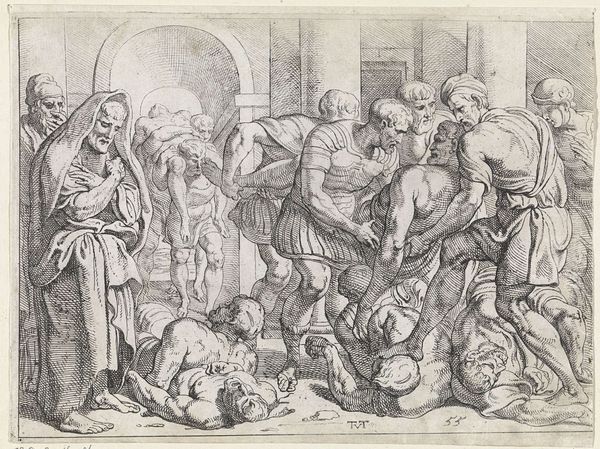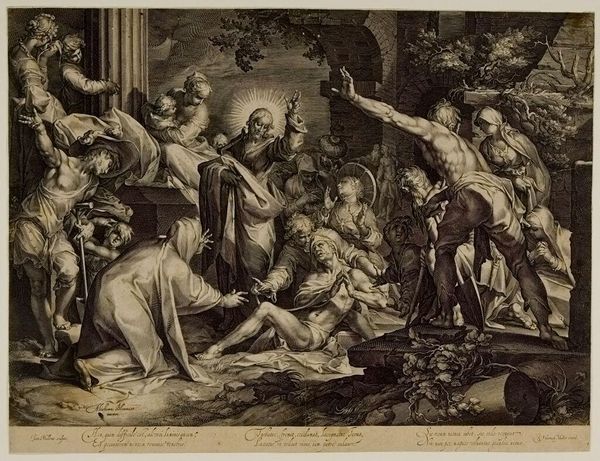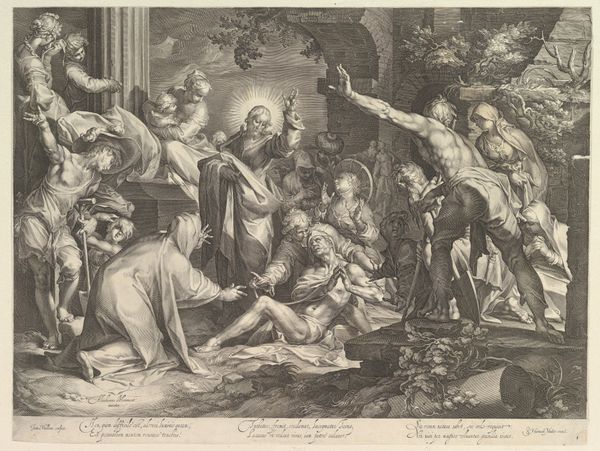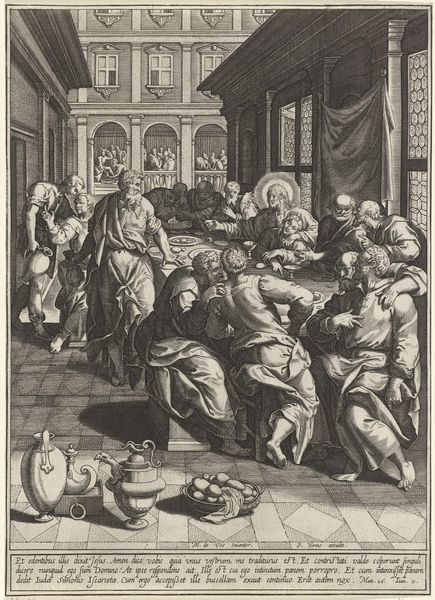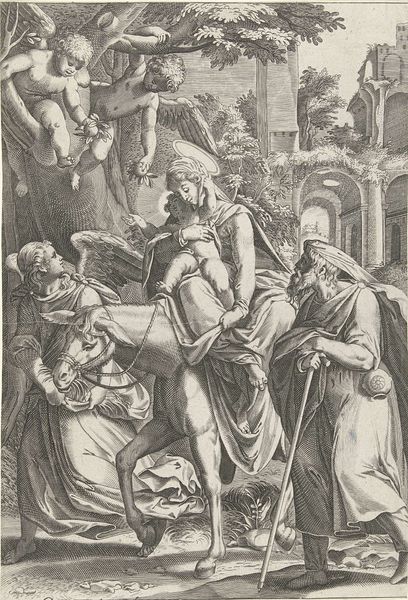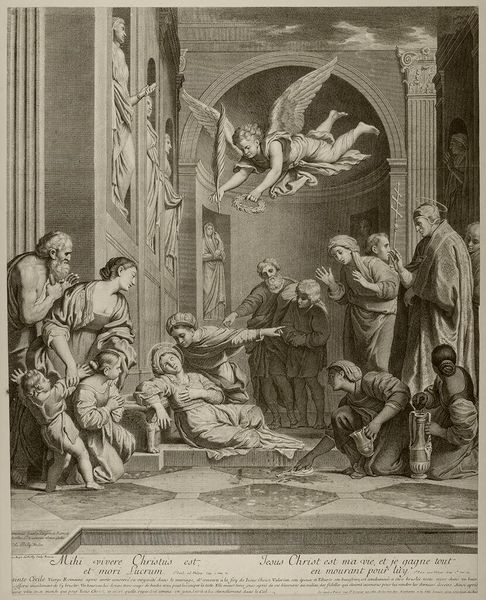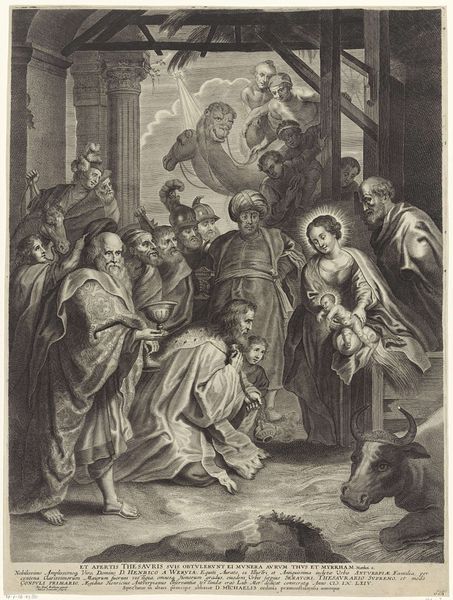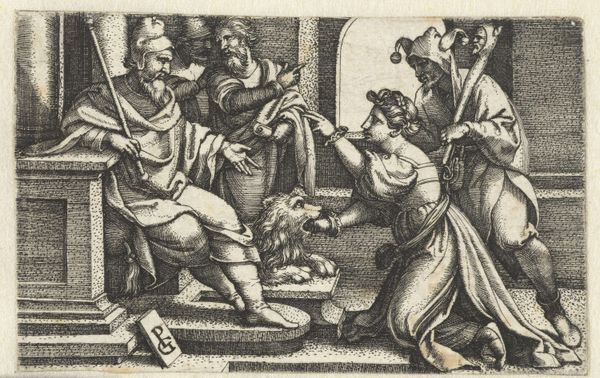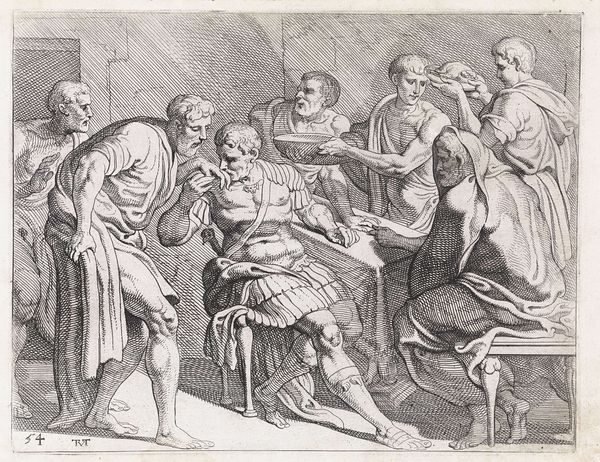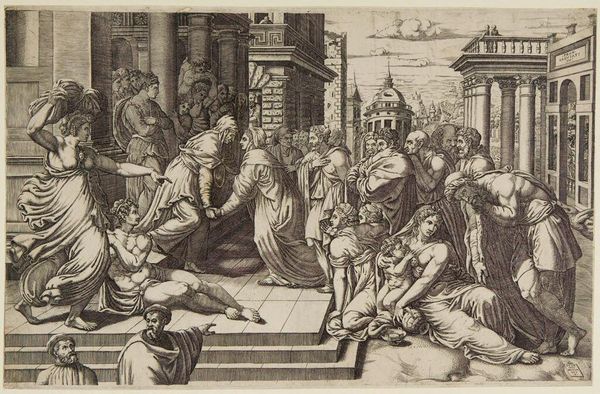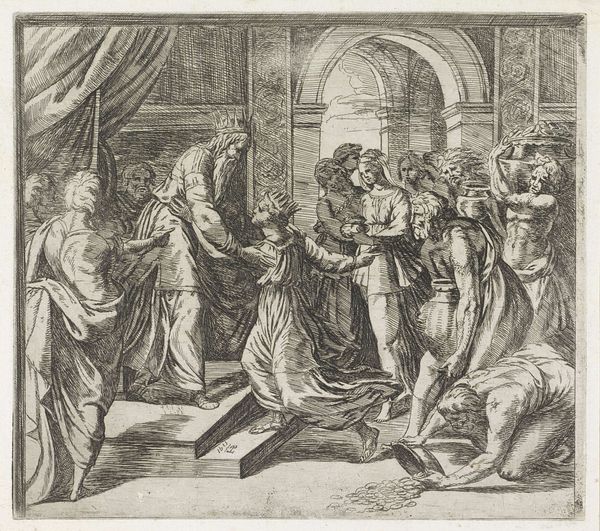
painting, oil-paint
#
allegory
#
painting
#
oil-paint
#
figuration
#
group-portraits
#
history-painting
#
italian-renaissance
#
realism
Dimensions: height 115 cm, width 161 cm, height 140 cm, width 190.4 cm, thickness 13 cm
Copyright: Rijks Museum: Open Domain
Editor: This is "The Adoration of the Magi" by Paolo Farinati, made around 1585. It's an oil painting now hanging in the Rijksmuseum. It feels… surprisingly crowded for a nativity scene. What do you see in this piece? Curator: It’s crucial to recognize how representations of the Nativity, and the Magi specifically, served ideological purposes. Consider the context: Farinati paints this during the Counter-Reformation. This adoration, then, becomes a potent statement of loyalty to the Church. Do you notice anything about the Magi themselves? Editor: Well, there are definitely more than three figures who seem to be bringing gifts… Curator: Precisely! This isn’t simply a depiction of a biblical scene. Farinati uses the guise of the Magi to create what amounts to a group portrait. Think about the patrons, the powerful families of Verona, potentially seeing themselves reflected in these figures. How does that shift your perspective? Editor: So, it's less about religious devotion and more about social status being portrayed through a religious lens? Curator: It’s both. Religion provided the framework, the acceptable narrative, but within that, you see the subtle negotiation of power and identity. Look at the composition itself, how Farinati positions certain figures. Who seems most prominent, and what does that say about the social hierarchy he’s depicting? And what does this mean in a time of intense religious conflict? Editor: I see it now. There's a kind of double meaning, then, layered with religious meaning but also commenting on society's structure. I never would have noticed without knowing the historical context. Curator: Exactly! These artists worked within very specific constraints. Examining their choices, the people they include or exclude, provides fascinating insight into their world.
Comments
rijksmuseum about 2 years ago
⋮
Farinati was the leading painter of Verona, Italy, and in his day as famous as Tintoretto and Veronese. He devised this dramatic composition around 1565, and later painted several more versions of it. The gestures of the crowded figures – such as the extended arm of the young man at the left – contribute to the picture’s dynamism. Jesus catches the attention of all gathered round, even the ass.
Join the conversation
Join millions of artists and users on Artera today and experience the ultimate creative platform.
